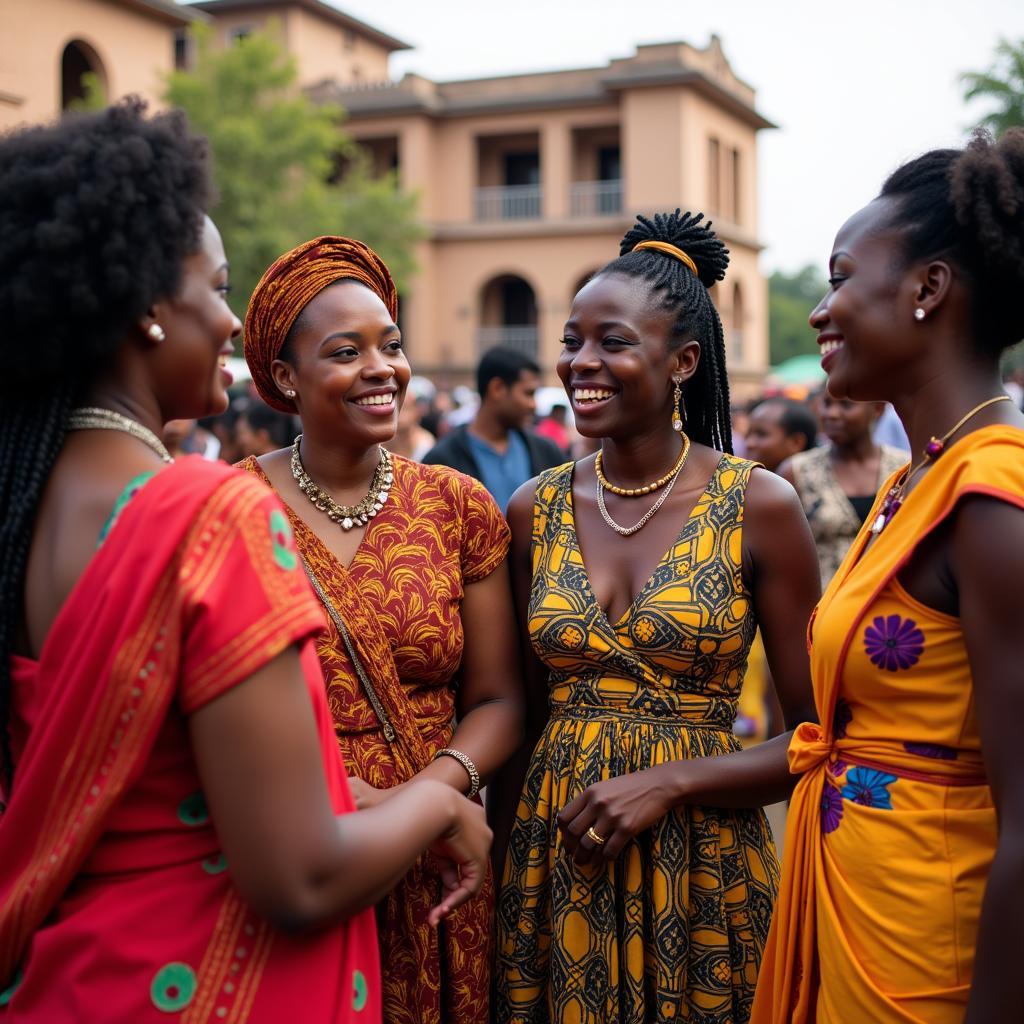African Head Scarfs: A Colorful Tapestry of Culture and Style
African Head Scarfs are more than just a fashion statement. These vibrant fabrics, intricately wrapped and styled, tell stories of tradition, identity, and heritage woven into the very fabric of African societies. From the arid landscapes of North Africa to the bustling cities in the south, head scarfs, known by various names like “gele,” “dhuku,” or “duku,” are a powerful symbol of womanhood, spirituality, and social standing.
Unwrapping the History: Ancient Roots and Evolving Meanings
The tradition of head wrapping in Africa dates back centuries. Evidence suggests that ancient civilizations like the Egyptians incorporated elaborate headwear into their attire. Hieroglyphics and sculptures depict pharaohs and deities adorned with head coverings, indicating their significance in religious and political spheres.
Over time, head scarfs transcended mere functionality, evolving into elaborate displays of social standing. Different colors, patterns, and tying techniques conveyed messages about marital status, tribe, and even personal wealth.
A Kaleidoscope of Cultures: Regional Variations and Significance
Across the vast continent, head scarfs hold diverse meanings and significance. In West Africa, the “Gele,” renowned for its elaborate and voluminous styles, is a symbol of celebration and pride, often worn at weddings and important gatherings.
In East Africa, the “Kanga,” known for its colorful patterns and Swahili proverbs printed on the fabric, serves as a form of nonverbal communication, expressing emotions or conveying messages to those who understand the hidden meanings.
Headscarfs in the Modern Age: Tradition Meets Contemporary Style
 Modern African Headwraps
Modern African Headwraps
Today, African head scarfs continue to evolve, seamlessly blending tradition with contemporary style. Modern African women are embracing head scarfs as a versatile fashion accessory, incorporating them into their everyday wear, professional settings, and special occasions.
Designers are also drawing inspiration from traditional African headwear, reinterpreting ancient techniques and motifs to create modern, fashion-forward pieces that resonate with a global audience.
Frequently Asked Questions About African Head Scarfs
1. What are some common fabrics used for African head scarfs?
Common fabrics include cotton, silk, satin, lace, and even handwoven textiles like Aso Oke from Nigeria or Kente cloth from Ghana.
2. Are there specific occasions when wearing a head scarf is customary?
While customs vary, head scarfs are often worn for religious ceremonies, weddings, funerals, and other important cultural events.
3. What is the cultural significance of the colors and patterns used in African head scarfs?
Colors and patterns often hold symbolic meanings tied to specific tribes, regions, or events. For instance, red may represent strength and power, while gold could symbolize royalty or wealth.
Need Assistance?
For further inquiries regarding African culture or assistance with any aspect of African Life, please contact us:
Phone Number: +255768904061
Email: kaka.mag@gmail.com
Address: Mbarali DC Mawindi, Kangaga, Tanzania
Our dedicated team is available 24/7 to provide support and guidance.


